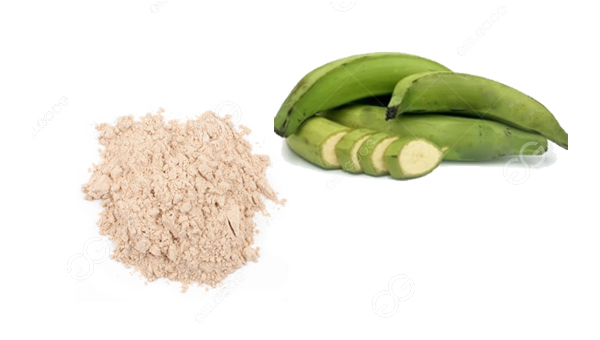Plantain flour, a versatile and nutritious alternative to traditional flours, has gained popularity in recent years. Derived from green plantains, this gluten-free flour serves as a staple in many cuisines around the world. But what is the process of production of plantain flour? Let’s delve into the intricate process of plantain flour production in a factory.

Harvesting and selection:
The journey begins on plantain farms, where skilled farmers harvest green plantains. Harvesting at the right stage is crucial for the quality of the flour. Only green plantains are chosen because they contain more starch and less sugar than ripe ones.
Transportation to the factory:
Once harvested, the plantains are carefully transported to the processing facility. Timely transportation is vital to prevent overripening and maintain the quality of the raw material.
Sorting and cleaning:
At the factory, the plantains undergo a meticulous sorting process. Any damaged or overripe plantains are removed, ensuring only the best quality fruits are used. The selected plantains are then thoroughly cleaned to remove dirt and contaminants.
Peeling and washing:
The green plantains are peeled to remove the outer skin, exposing the starchy interior. After peeling, the plantains are washed to eliminate any remaining impurities.
Slicing:
The peeled and washed plantains are then cut into slice, commonly referred to as chips. These slice are of uniform size to facilitate even drying and processing.
Drying:
The plantain chips undergo a drying process to reduce moisture content. Traditional sun drying or modern mechanical drying methods may be employed. The goal is to achieve the desired moisture level for efficient milling.
Milling:
The dried plantain chips are fed into milling machines, which grind them into a fine powder. The milling process transforms the dried chips into plantain flour, ready for packaging. It is important to maintain a consistent texture and quality throughout the milling phase.
Sieving and packaging:
Following milling, the plantain flour undergoes sieving to achieve a uniform consistency. This process ensures the removal of any remaining coarse particles, resulting in a smooth and fine flour. The final product is then packaged into various sizes, ready for distribution.
Quality control:
Throughout the production process, quality control measures are implemented to ensure that the plantain flour meets strict standards. This includes regular testing for moisture content, texture, and overall product quality.
Distribution:
The packaged plantain flour is then distributed to various markets and consumers, ready to be incorporated into a wide array of recipes, ranging from traditional dishes to modern gluten-free alternatives.
The production of plantain flour is a meticulous and fascinating process that transforms humble green plantains into a versatile and nutritious cooking ingredient. From the farm to the factory, each step is crucial in ensuring the final product’s quality and consistency. As plantain flour continues to gain popularity, understanding its production process provides a deeper appreciation for this unique and valuable culinary resource.